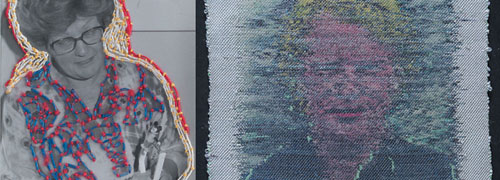
Too often we hear about corporations that are using creators’ works — art and music — without permission (https://www.artsy.net/article/artsy-editorial-graffiti-artists-fighting-brands-steal-work). Many raise concerns about AI borrowing and boosting artwork without attribution or compensation (https://www.newyorker.com/culture/infinite-scroll/is-ai-art-stealing-from-artists). So it’s gratifying to learn about the efforts of Loewe, a corporation that celebrates and collaborates with artists rather than cannibalizing their work.
Loewe is a luxury fashion house founded in 1846 by a group of Spanish leather craftsmen. Loewe’s efforts to support the arts are severalfold — it organizes exhibitions, promotes a prestigious international art competition, and creates artist-inspired capsule collections. It created a foundation in 1988, which supports international prizes for craft and poetry, collaborates with major arts festivals, and also supports other art, photography, and dance. The Foundation sponsors the Loewe Foundation Craft Prize, an international award celebrating exceptional craftsmanship. Through the Prize, the Foundation aims to discover uniquely talented artisans with the vision and innovative drive to set new standards for the future of craft. The Prize ecognizes those who combine tradition, modernity, and a unique artistic concept. Like browngrotta arts aims to do, the Loewe Prize elevates artists who contribute continuously to contemporary culture through a contemporary reinterpretation of tradition.

In 2019, for example, as part of Milan Design Week, Loewe installed an exhibition that placed a spotlight on basketmaking, divided into two installments — inspiration and collection. As part of that project, Loewe’s creative director, Jonathan Anderson, invited Japanese artist Jiro Yonezawa to creaft one off pieces in which he swapped the strips of bamboo, with which he usually works, for naturally dyed Loewe leather.

Several of the artists that work with browngrotta arts have made the Loewe Foundation Craft Prize short list, including Mercedes Vicente, Yeonsoon Chang, Ferne Jacobs, and Simone Pheulpin, who was awarded the Honor Prize in 2018. Finalists are brought to Europe for the award presentation. For Polly Adams Sutton, who made the short list in 2024, that meant a trip to Paris to see her work installed. “What an amazing privilege it was!” she says of the competition. “By providing a means for craft artists of all mediums to be recognized as Art, Loewe elevates the crafts as legitimate forms of art. Loewe creations may use craft as inspiration for their work but the craft prize has been created solely for the artists to be honored and to give craft its place in the art world.”

Loewe also works with artists to create specially curated collections, inspired by the artists’ work. This year, Loewe partnered with Kay Sekimachi to create a limited-edition collection of handbags that showcase her pioneering work in loom weaving and draw upon Sekimachi’s 1999 “Takarabako” series. The Puzzle Fold Tote and Bucket Bag are crafted in cotton jacquard with a calfskin base and details, and feature a gold embossed motif with Sekimachi’s name. The project was licensed by Artists Rights Society.
Kudos to the artists honored and to Loewe and its commitment to craft.



















